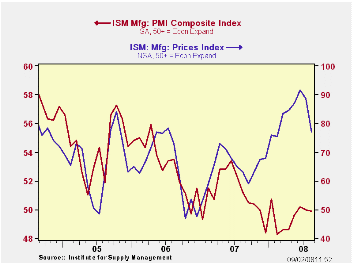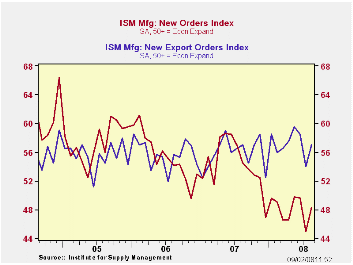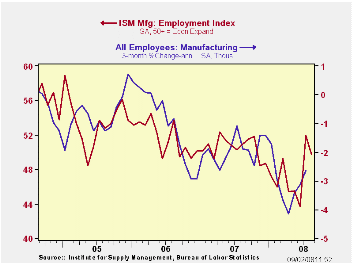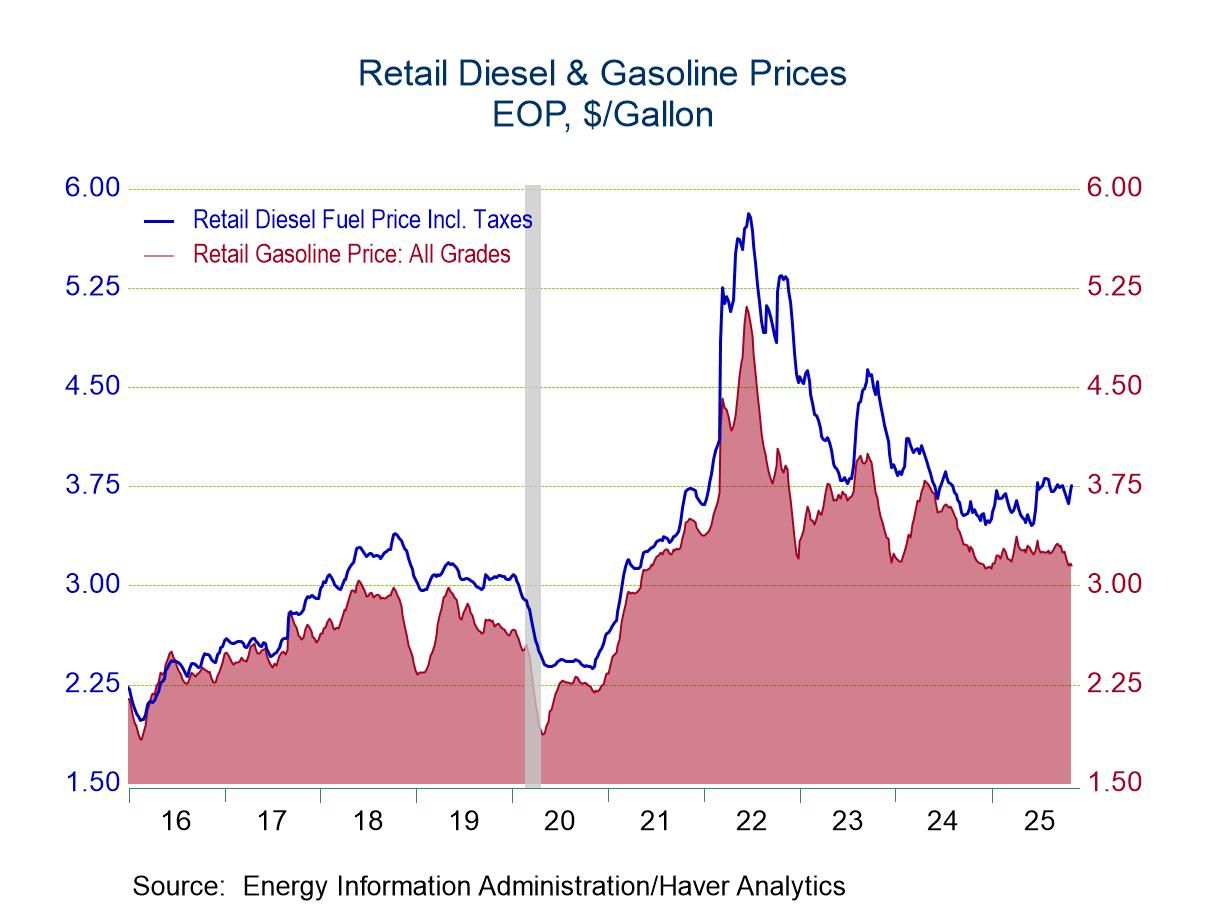 Global| Sep 02 2008
Global| Sep 02 2008ISM Index About Unchanged
by:Tom Moeller
|in:Economy in Brief
Summary
The Institute for Supply Management reported that it's Composite Index of Manufacturing Sector Activity was about unchanged from its July level at 49.9. It thus remained up slightly from the monthly lows near 48 this past winter. [...]

The Institute for Supply Management reported that it's Composite Index of Manufacturing Sector Activity was about unchanged from its July level at 49.9. It thus remained up slightly from the monthly lows near 48 this past winter. Consensus expectations had been for more of a decline to 49.1 in July.
Despite the very recent improvement, the index's average level so far this year of 49.5 was near its lowest since early-2003. The index level is consistent with a roughly unchanged level in industrial sector activity.
During the last twenty years there has been a 64% correlation between the level of the Composite Index and the three-month growth in factory sector industrial production.
It is appropriate to correlate the ISM index level with factory sector growth because the ISM index is a diffusion index. It measures growth by using all of the positive changes in activity added to one half of the zero change in activity measures.
The new orders index recovered most of its sharp drop in July. However, the two month average of the index at 46.6 was near this cycle's low. The new export orders sub-series recovered most of its July drop with a 3.0 point rise to 57.0. During the last ten years there has been a 53% correlation between the index and the q/q change in real exports of goods in the GDP accounts.
The employment index fell 2.2 points to 49.7 but that retraced just a piece of the July rise. During the last twenty years there has been a 67% correlation between the level of the ISM employment index and the three-month growth in factory sector employment.
The production index dipped to 52.1 and still indicated a rising level of output. The inventories series rose sharply to 49.3 and that recovered most of its July decline.
Order backlogs remained near the lowest level (43.5) this year as the index rose just slightly in August. It averaged 48.9 during all of 2007.
Prices paid fell sharply. The index fell 11.5 points to 77.0, its lowest level since February. That followed the recent decline in oil prices. During the last twenty years there has been a 79% correlation between the price index and the three-month change in the PPI for intermediate goods.
Oil and the U.S. macroeconomy: an update and a simple forecasting exercise from the Federal Reserve Bank of St. Louis can be found here.
The Menace of Inflation from the Center for Economic and Policy Research is available here.
| ISM Mfg | August | July | August '07 | 2007 | 2006 | 2005 |
|---|---|---|---|---|---|---|
| Composite Index | 49.9 | 50.0 | 51.2 | 51.1 | 53.1 | 54.4 |
| New Orders Index | 48.3 | 45.0 | 54.5 | 54.3 | 55.4 | 57.4 |
| Employment Index | 49.7 | 51.9 | 50.9 | 50.5 | 51.7 | 53.6 |
| Prices Paid Index (NSA) | 77.0 | 88.5 | 63.0 | 64.6 | 65.0 | 66.4 |
Tom Moeller
AuthorMore in Author Profile »Prior to joining Haver Analytics in 2000, Mr. Moeller worked as the Economist at Chancellor Capital Management from 1985 to 1999. There, he developed comprehensive economic forecasts and interpreted economic data for equity and fixed income portfolio managers. Also at Chancellor, Mr. Moeller worked as an equity analyst and was responsible for researching and rating companies in the economically sensitive automobile and housing industries for investment in Chancellor’s equity portfolio. Prior to joining Chancellor, Mr. Moeller was an Economist at Citibank from 1979 to 1984. He also analyzed pricing behavior in the metals industry for the Council on Wage and Price Stability in Washington, D.C. In 1999, Mr. Moeller received the award for most accurate forecast from the Forecasters' Club of New York. From 1990 to 1992 he was President of the New York Association for Business Economists. Mr. Moeller earned an M.B.A. in Finance from Fordham University, where he graduated in 1987. He holds a Bachelor of Arts in Economics from George Washington University.






